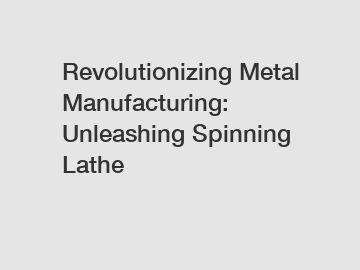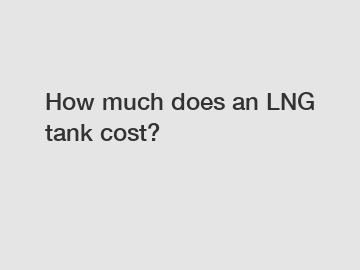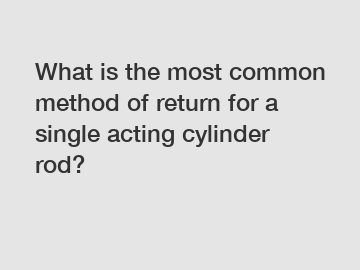What is the Difference Between a Condenser and a Cooling Tower?
https://www.auvc.com/products/closed-circular-cross-flow-cooling-tower/
In this comprehensive article, we aim to shed light on the key differences between a condenser and a cooling tower. These two essential components are widely used in various industries, including HVAC systems, power plants, and industrial processes. Understanding their functionalities, design, and applications can help you make informed decisions for your specific needs.
Introduction
Condensers and cooling towers are both heat exchange devices used to manage thermal energy, but they serve distinct purposes and operate differently. Let's dive into the details and explore the unique characteristics of each system.
Condenser
A condenser is an integral part of a refrigeration cycle or an air conditioning system. Its primary function is to convert hot, high-pressure vapor into a liquid state. This transformation occurs by removing heat from the working fluid, which could be refrigerant in a cooling system or steam in a power plant.
Types of Condensers
1. Air-Cooled Condenser
The air-cooled condenser dissipates heat to the surrounding air through the use of fans. It is a common choice for small-scale cooling systems and applications where water availability is limited.
2. Water-Cooled Condenser
Water-cooled condensers, on the other hand, use water as the cooling medium. These condensers are highly efficient and are often employed in large-scale industrial processes and power plants.
3. Evaporative Condenser
Evaporative condensers combine the advantages of air-cooled and water-cooled condensers. They use water sprays to cool the hot vapor, making them suitable for hot climates and reducing water consumption compared to traditional water-cooled systems.
Applications of Condensers
Condensers find application in various fields, including:
Refrigeration Systems: In refrigeration systems, condensers play a crucial role in converting refrigerant vapor into a liquid state, enabling the system to absorb heat from the environment.
Power Plants: In thermal power plants, steam turbines generate electricity. After the steam has done its work, it needs to be condensed back to water for recirculation in the system, and that's where condensers come into play.
Chemical Processing: Condensers are used in chemical plants to condense vapors released during various processes, aiding in separation and recovery.
Cooling Tower
A cooling tower is an essential component used to transfer heat from industrial processes or air conditioning systems to the atmosphere. It facilitates the cooling of water, which can then be recirculated back into the system. Cooling towers are commonly used in power plants, manufacturing units, and large-scale HVAC systems.
Types of Cooling Towers
Additional resources:
When was the loader invented?
How does laser die cutting work?
How do you straighten wire with rollers?
What is the maximum stroke of a hydraulic cylinder?
AGV: Which Industries Can Benefit the Most?
Which Bop Equipment is the Game Changer?
Which precision laser cutter provides the best value for money?
1. Natural Draft Cooling Tower
Natural draft cooling towers rely on the principle of buoyancy for air circulation. Warm, moist air rises, while cooler air is drawn in from the surroundings. These towers are massive structures often seen in power plants.
2. Mechanical Draft Cooling Tower
Mechanical draft cooling towers use fans to draw air through the system. This design offers more control over the airflow and is commonly used in industrial applications.
Applications of Cooling Towers
Cooling towers serve various purposes, including:
Power Plants: Cooling towers are a vital part of thermal power plants, where they cool down the hot water used in the condenser, allowing it to be reused in the power generation process.
Manufacturing: In industrial processes that generate excess heat, cooling towers help maintain optimal operating temperatures and prevent equipment damage.
Commercial HVAC Systems: Large buildings with centralized air conditioning systems employ cooling towers to dissipate heat from the building's interior.
Differences between Condensers and Cooling Towers
1. Functionality
The primary function of a condenser is to convert vapor into a liquid state by releasing heat. On the other hand, a cooling tower is designed to remove heat from water used in industrial processes or HVAC systems, facilitating heat dissipation to the atmosphere.
2. Working Medium
Condensers typically deal with refrigerants or steam in various systems, while cooling towers primarily handle water.
3. Design
Condensers come in different types, such as air-cooled, water-cooled, and evaporative, based on the cooling medium used and the specific requirements of the application. Cooling towers, on the other hand, can be classified into natural draft and mechanical draft, based on their airflow mechanisms.
4. Applications
While there may be some overlap in applications, condensers are primarily used in refrigeration systems, power plants, and chemical processing, while cooling towers find extensive usage in power generation, manufacturing, and large-scale HVAC systems.
Conclusion
In conclusion, condensers and cooling towers are both vital components of various industrial processes and HVAC systems, each serving distinct purposes. Understanding the differences between these devices can help you make informed decisions when designing or upgrading your systems.
Remember, the choice between a condenser and a cooling tower depends on factors like system requirements, cooling capacity, and water availability. Proper selection and maintenance of these devices can significantly impact the efficiency and overall performance of your operations.
The Secret to Perfectly Weighed Noodle Products!
Revolutionary Motorcycle Valve: Boost Performance & Solve Common Engine Problems
What are the 3 types of feeds?
What is the principle of cold press oil machine?
What kind of machine is used to extract the oil from the sunflower seed?
How much does a conveyor belt cost?
Which cutting-edge 4L bottle blow molding machine can revolutionize the packaging industry?
275
0
0
Related Articles
-
Revolutionizing Metal Manufacturing: Unleashing Spinning Lathe
Revolutionizing Metal Manufacturing: Unleashing Spinning Lathe.
229
0
0
-
Which Advanced Features of X Ray Counter Machines are Changing the Medical Field?
Which Advanced Features of X Ray Counter Machines are Changing the Medical Field?
224
0
0
-
245
0
0
-
Unlock the Secrets: 8 Essential Machinery Engine Parts for Optimal Performance
Unlock the Secrets: 8 Essential Machinery Engine Parts for Optimal Performance.
227
0
0
-
221
0
0
-
240
0
0
-
Revolutionize Packaging: Unleashing Productivity with Automatic Cardboard Die Cutting!
Revolutionize Packaging: Unleashing Productivity with Automatic Cardboard Die Cutting!
209
0
0
-
What is the most common method of return for a single acting cylinder rod?
What is the most common method of return for a single acting cylinder rod?
248
0
0









Comments
All Comments (0)